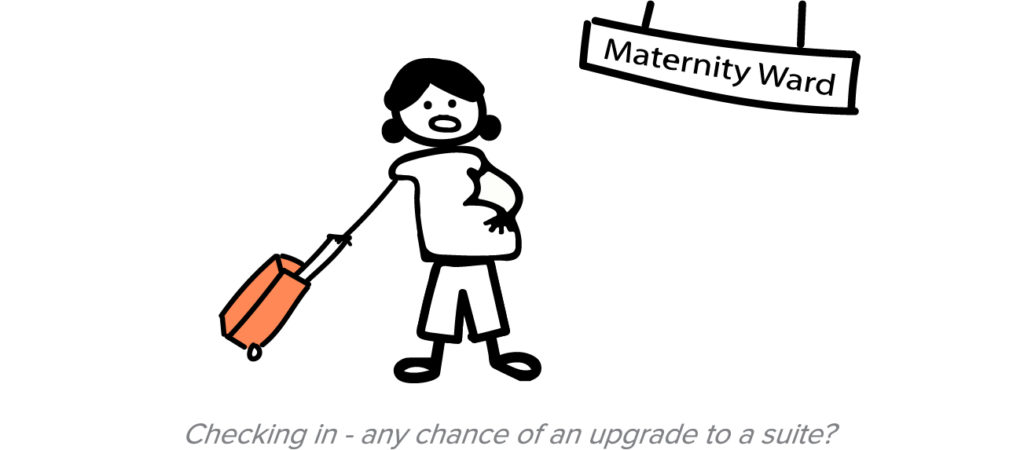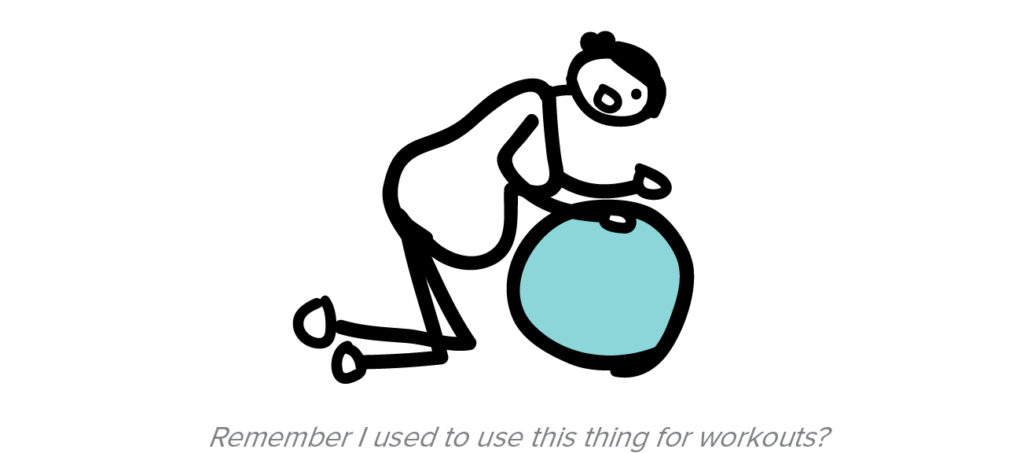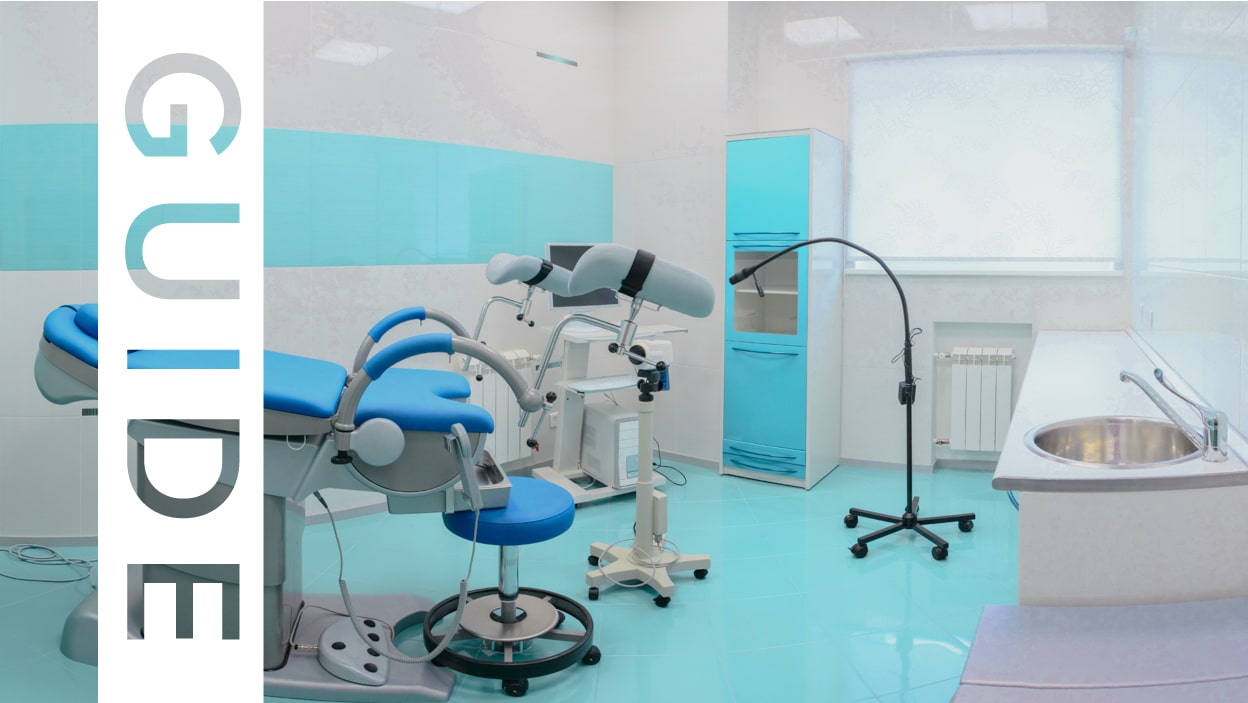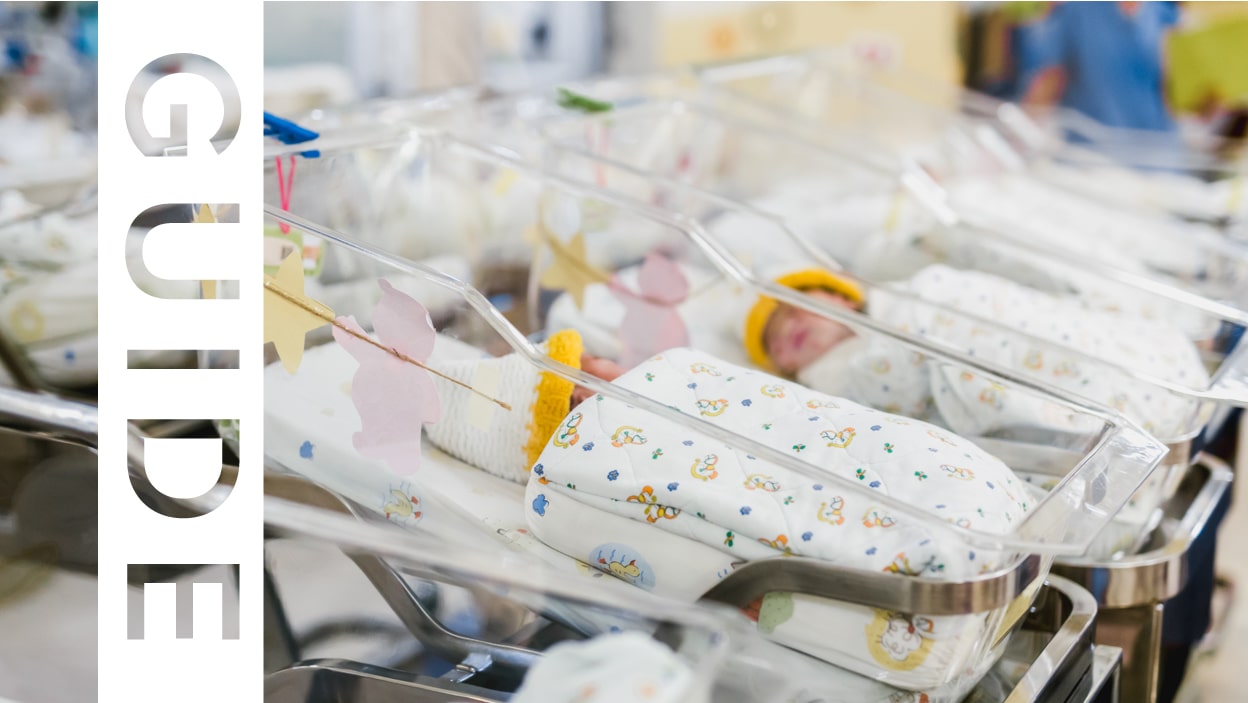

Approved by the What’s Up Moms Medical Advisory Board
The tricky thing about labor: before you can think about getting through it, you have to first learn how to tell when you’re in it. You’d think it would be totally obvious like it is in movies, but thanks to those pesky Braxton Hicks contractions, it’s actually not always as clear cut as you might imagine.
As you probably know by now, Braxton Hicks contractions feel like a quick tightening followed by a release, whereas actual contractions become increasingly intense, increasingly frequent and longer-lasting. Also, if your water breaks — in one big gush or bit-by-bit — that’d be another sign that labor has arrived.
So, once labor begins, what are you supposed to do? No two labors are the same (they’re like butterflies!), and some will require interventions for one reason or another, but it helps to learn the general gist before you’re in the throes of it all so you can approach this event with a sense of calm. Plus, you can pace yourself. After all, labor can be a marathon.
TIMELINE
Especially if this is your first baby, it’s highly unlikely that the kid is going to punk you and just slide out without warning while you’re at the grocery store. More often than not, first labors are long; early labor alone can last many hours to days. And having a familiarity with the stages just allows you to settle in and take it one step at a time.
ON GETTING TO THE HOSPITAL (AND NOT)
In the movies they’re like holy crap I’m in labor!, then they drop everything and run to the hospital; dinner is left uneaten, the phone is flung to the floor while the friend on the other end of the line is left talking to no one… But IRL, not so much. You can drop everything and speed to the hospital, but if you’re not far enough along in active labor (see more below) they’ll send you back home.
If yours is a “standard” (i.e. non- high-risk) pregnancy and your water has not yet broken, your doc will likely instruct you to come to the hospital only once your contractions are coming every five minutes and lasting about a minute each. And getting to that point might take hours — even many hours — so manage your expectations accordingly. Time your contractions with an app or a stopwatch by clocking from the beginning of one until the beginning of the next. And no need to do this continuously. Just check in periodically, paying special attention when you notice a shift in the intensity of your symptoms.
If your water has broken — which may happen in a trickle, a gush, or something in between — you’ll want to head to the hospital sooner rather than later. Sometimes you’re not sure if your water has broken (Was that my amniotic fluid or did I just pee a little?), and if that’s the case, use a pad (not a tampon) and let the hospital check. Once your water breaks, if you’re at term, labor usually starts soon thereafter if it hasn’t already, and doctors usually want to deliver within 24 hours to reduce the chance of infection for you or baby.
Understandably, many women want to get to the hospital ASAP. And you’ll get there! But in the meantime, enjoy the upsides to laboring at home: your comfy bed to loll around in, privacy to practice your labor breathing really loudly with no one judging you, Netflix, warm showers, and walks around your neighborhood if you can swing it. (Bonus: walking helps labor to progress thanks to the wonder of gravity.) Plus, at home you might be able to catch some Zzzs, which at the hospital can be darn near impossible with all the hoopla.

KNOW THE STAGES OF LABOR
Stage 1
This stage begins when you’re having contractions that cause progressive changes (dilation) in your cervix — i.e. not Braxton Hicks contractions. Stage 1 is divided into two phases: early labor and active labor:
Early labor: The cervix gradually effaces (thins out) and dilates (opens) from 0 – 6 cm.
Contractions may start as pressure in your back, then move around to the front. They’ll gradually become longer, stronger, and closer together.
This is the longest part of labor and can last several hours to a whole day. For a much of it you’ll likely be able to putter around, so take care of any outstanding business: packing for the hospital, washing your hair (for reals), shaving your legs (not that you can reach them or even see them), and getting any older kids set up with caretakers.
You can still talk through your contractions – so know that if you call your doctor and tell her you’re 100% sure you’re about to give birth right this minute, from the sound of your voice alone she’ll know that no, you are not.
It’s helpful to have someone with you to help with comfort measures like massage and breathing and relaxation exercises like the ones from your class that you never thought you’d actually use. Husbands can be great at this, and if you have a doula, she’ll come over.
By the end of early labor, contractions will be coming every five minutes and lasting 40 to 60 seconds each.
Active labor: Dilation goes from 6 cm – 10 cm.
Your contractions are now coming closer together, feeling stronger and lasting longer, and your cervix is dilating more rapidly. At this point it’s difficult to talk through your contractions and yes, gurl, IT IS TIME TO GO TO THE HOSPITAL, HEYO!!

Once there, they’ll check your cervix, and if you’re indeed in active labor, you’re in. (FYI some hospitals have separate labor and delivery rooms; others keep you in the same room for both labor and delivery). You’ll get a gown or you can opt to wear your own — just don’t expect it to emerge looking pristine — and they may hook you up to a fetal heart rate monitor.
You’ll meet your assigned L&D nurse who will get to know you REALLY intimately over the next several hours. She’s your new BFF since she’s the one who pings anesthesia if you want an epidural, fetches you popsicles in your preferred flavors, and shows you cute pics of her kids to distract you. She’ll also be regularly monitoring the baby’s heartbeat as well as your blood pressure, contractions, and cervix.
This stage is all about breathing through your contractions and staying as comfortable as you can. That may involve finding good positions (all-fours is often soothing), rolling on a ball, applying counterpressure to your back, zoning out to music, or getting an epidural. Pro tip: if you think you’ll go the epidural route, don’t wait too long to request it. Once your doc puts in the order it can still be awhile before the anesthesiologist arrives, especially if the hospital is busy — and no one needs you to become a crazed, feral beast while you wait.
Turns out a baby crawling out of your body can make you feel really freaking irritable, so don’t worry about being too polite — and to heck with visitors if they’re depleting any of your energy. (Your partner can play bouncer.) Sometimes it helps to go inward and visualize your contractions as productive, each one physically nudging your baby ever-so-gradually down the birth canal.
If your water hasn’t ruptured yet, your doc may do it manually to help speed things along; just know that things will get very intense very quickly after that.
FYI, eating is generally not allowed at this stage just in case you end up needing a C-section. But the hospital will have clear liquids, popsicles, or flavored ices on hand, so stay hydrated. Labor is LABOR – and you need to replenish.
Meanwhile, the last part of active labor is called…
Transition, which happens as you approach 10 cm dilation.
Straight-talk: this is the worst/ most painful part of labor, but it’s also the shortest – usually 30 minutes to 2 hours. Even if you’ve been dead-set on a medication-free birth, you may seriously question that decision now. Contractions will be coming fast and furious and lasting 60-90 seconds with little rest in between. Some women experience shaking, vomiting, and an intense urge to push (which you have to resist until your doc gives you the green light). Your mucus plug may come out if it hasn’t yet. And if you’re not already in a delivery room, they’ll get you there pronto. It’s Go Time.

Stage 2 – AKA “Pushing”
This stage begins when the cervix is fully dilated and ends with the birth of your baby.
Homestretch! For many women, this stage is quick and relative bliss, as there’s finally something to do; for others this stage is still challenging and takes a few hours. If you’ve had an epidural, though, you won’t fully feel your contractions — and therefore you won’t feel the need to push — so your nurse or doc will cue you when it’s time for each push. (And in preparation for this stage, you might tell them to ease up on the epidural, so you can have some sensation back).
You’ll be instructed to push intermittently — with moments of rest in between — and if this sounds like a workout, it is one, but unlike at the gym you’ll have a cheering squad of docs and nurses surrounding you. You’ll push like you’re going to the bathroom, and sometimes you will go to the bathroom, right there on the delivery table. Sound horrifying? Take solace in the fact that if it does happen, you won’t even know it, and trust us, nothing fazes these pros – they’ve seen it all.
Most docs and midwives will massage your perineum with oil or lubricant and warm compresses to keep it flexible and prevent tearing during pushing (BTW episiotomies — incisions made to the perineum — are not routine and are reserved for special circumstances.) Sometimes changing positions periodically can help the baby navigate the birth canal based on the direction of his or her head and/or the shape of your pelvis. If there is a birthing bar to grab onto, that can help with bearing down and holding certain positions. Some places make mirrors available in case you want to see your birthing progress, which sounds alarming but can actually be very motivating.
Though some women are lucky enough to only push a few times, most first-timers usually push for 1-3 hours. Baby’s head will emerge first (crowning), then doc will turn baby to allow one shoulder and then the next to come out, followed by the rest of baby’s body.
Stage 3 – Delivering the placenta
This stage begins right after baby is out and ends with the delivery of the placenta.
HOW CAN THERE BE ANOTHER JOB TO DO AFTER YOU’VE PUSHED AN ENTIRE HUMAN BABY OUT OF YOUR BODY?!? you might be wondering. Fair enough. But don’t worry, this is barely a thing; it usually takes one push, and chances are you’ll be so busy making googly eyes at your new little love-nugget that you won’t even register it.
THE AFTERMATH
After you deliver the placenta, your uterus should start contracting again and firm up. Your doc and/or nurse will keep checking this and will massage your uterus to help this along; you may also be given oxytocin to help. (BTW over the course of the next day or two, nurses will come into your room at seemingly all hours of the day to massage your belly; you’ll get used to it.)
Spend some time skin-to-skin with baby. Once s/he’s cleaned off (or before!) have baby placed right on your chest; If you’re breastfeeding and feel like it, put baby near your nipple; since babies are born with the Rooting Reflex, if given enough time they’ll likely eventually find the nipple and begin sucking. You’ll let out a yelp with those first sucks (so small and yet so mighty!) but you and baby will soon find a good latch and position (and your nipples will eventually get acclimated) so you won’t need to quietly weep every time you nurse. Bonus: bf-ing triggers the release of oxytocin, the same hormone that causes contractions, which helps your uterus firm up.
Once your doc is certain she’s gotten the whole placenta out, she’ll check you for any tears and stitch you up. If you had an epidural, they’ll remove the catheter from your back (painless). Once you’ve had a chance to hang with baby for a bit, she’ll be whisked off for some eye drops and a vitamin K shot. Don’t worry, she’ll be back right quick! And a note on that: more and more, the rec is that baby stay with you for longer. Most hospitals promote “rooming-in which means keeping the baby with mom as opposed to in the nursery. So you can plan on baby being with you pretty much for the duration.
You may continue to feel some menstrual-cramp-y contractions for a few days, especially during breastfeeding. Grab some Tylenol as needed – though, chances are, compared to what you just went through, these will hopefully be NBD.
A walk in the park, really.
Like what you see? Sign up for our weekly newsletter!







